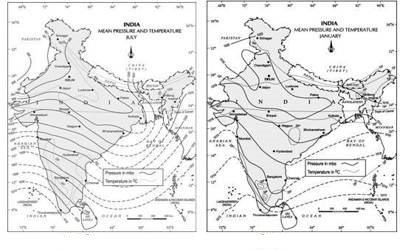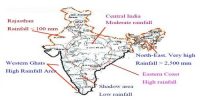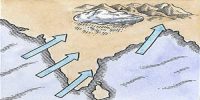Mechanism of Surface Pressure and Winds in the Summer Season in Indian Subcontinent
As the summer sets in and the sun shift northwards, the wind circulation over the subcontinent undergoes a complete reversal at both, the lower as well as the upper levels. By the middle of July, the low-pressure belt nearer the surface [termed as Inter-Tropical Convergence Zone (ITCZ)] shifts northwards, roughly parallel to the Himalayas between 20° N and 25° N. By this time, the westerly jet stream withdraws from the Indian region. In fact, meteorologists have found an interrelationship between the northward shift of the equatorial trough (ITCZ) and the withdrawal of the westerly jet stream from over the North Indian Plain. It is generally believed that there is a cause and effect relationship between the two. The ITCZ is a zone of low pressure, attracts the inflow of winds from different directions. The maritime tropical airmass (mT) from the southern hemisphere, after crossing the equator, rushes to the low-pressure area in the general southwesterly direction. It is this moist air current which is popularly known as the southwest monsoon.

Pressure in Summer Season
- The atmospheric pressure is low all over the country due to high temperature.
- But strong dynamically induced divergence over north-west India prevents the onset of south-west monsoons.
Winds in Summer Season
- There is a marked change in the direction and speed of the winds from winter.
- The winds are by and large light and variable.














